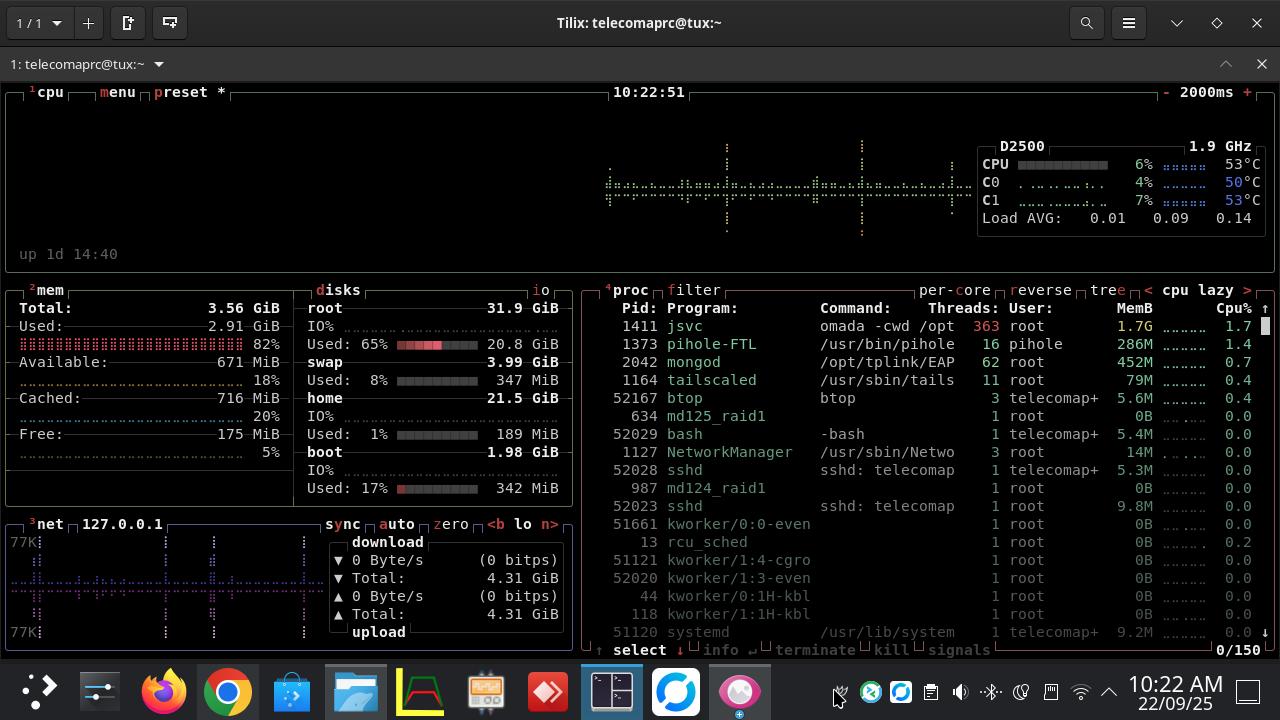Any Performance and Footprint Tuning options for Omada SDN Controller V5 on Linux
We have been running a 72 AP, 2 PoE Switch, ER8411 Router with an Omada Software Controller on a custom built 1U linux embedded low power Hardware. The board can support only 4 GB RAM max and that much is installed. The CPU is Intel Atom D2500, 2C2T, 1.866GHz. Here is how the deployment scene looks like under normal use:

You can see that 1.7G is used by Omada , 452 MB by Mongo DB, which is again used only by Omada exclusively in the system. So Omada App footprint on linux is 2.1 GB+. Other major services on system are Pi-Hole and tailscale but their contribution is less than the above two. Total Memory usage (OS+other services+omada) is 2.91 GB out of which 2.1GB+ is Omada alone >
The general CPU usage of the device is like this:

It does not seem overloaded in nornal opreration and that periodic spike in use is probbaly Java GC or some other system GC kicking in, doing its job quickly and going away.
Our current, configuration of omadaDOTproperties is as under:
maxDOTdevice=150
And the following has been added to control.sh:
-Xms1024m -Xmx1024m
The above changes did bot impact the footprint at all.
Are these numbers reasonable and to be expected for such a system. Is their a way to reduce the memory footprint of Omada by tweaking some other startup parameter ?
Also we observed that:
(1) On startup, Omada takes long time to start. Once startup is completed, the Omada Software's CPU usage stays at 100% for a good amount of time (5+ minutes), but after that falls to 5%. Is this behavior to be expected ?
(2) Whenever a configuration is made from mobile app or Web-interface of omada.tplinkcloud.com that impacts all APs, then the CPU shoots momentarily to 100% but this is for very small duration of time. The problem is that after this few APs go into a flapping state of ADOPTING & DISCONNECTED. The APs have to be recovered either by Force Provisioning (sometime even this does not work) or Rebooting by "PoE recovery". This problem usually does not happen if the configuration is done directly from web-interface of controller hardware (Controller-IP COLON 8043)
So is there a safe and tested way to throttle Omada related PIDs CPU usage to say 60-70%, even if it becomes a bit slow in implementing configuration and mobile app access ?


